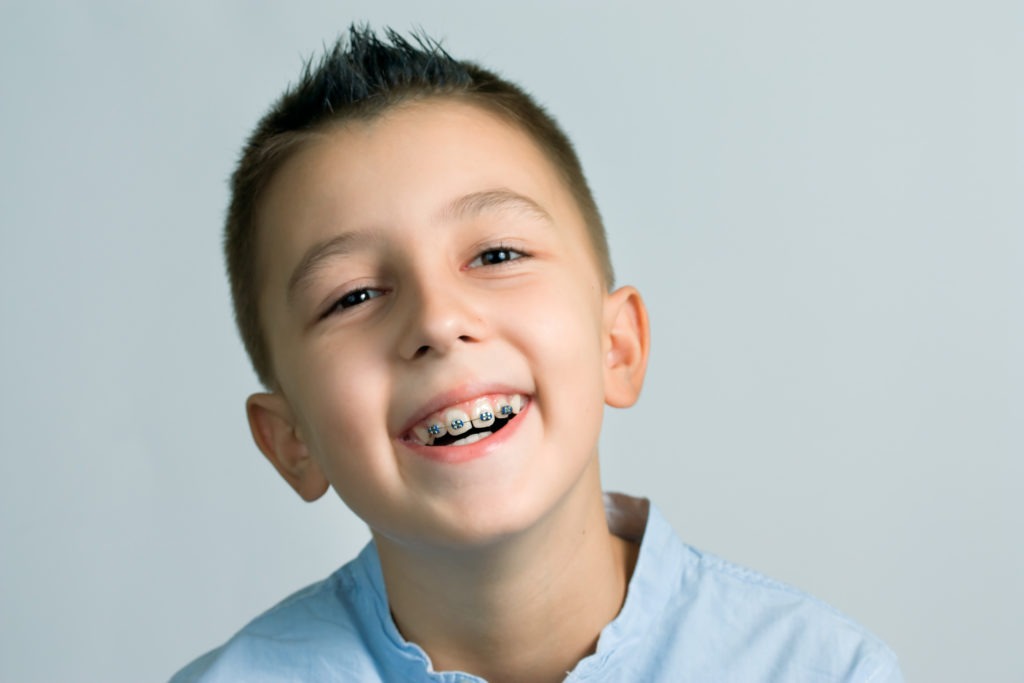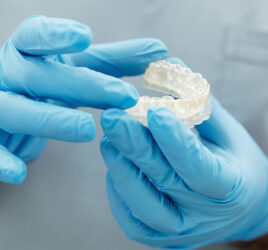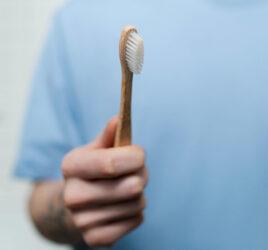After an orthodontic evaluation, Dr. Da Silveira may talk to you and your child about two-phase treatment. You may have never heard of this type of treatment before, but there is actually no reason to feel apprehensive or intimidated by it!
Two-phase treatment is actually quite ordinary when it comes to orthodontic treatment. Dr. Da Silveira and Bee Cave Orthodontics are here to put you at ease and give your child the healthiest smile possible. Two-phase treatment is actually a straightforward process and nowhere near as daunting as it sounds. It is a simple orthodontic procedure that is completed in two separate phases. The first phase is centered around correcting issues such as crossbites, harmful habits or jaw issues, while the second stage is dedicated to the physical changes of the face and straightening the teeth. Dividing a treatment into two phases allows us at Bee Cave Orthodontics to give our patients long-lasting, healthy and beautiful smiles!
Phase I
The first phase begins with a process called interceptive orthodontic treatment. In this phase, orthodontic issues that are still in their early stages are dealt with to prevent them from becoming more severe issues in the future. We start interceptive treatment when patients are between six and ten years of age because they still have permanent teeth coming in. When treatment is delayed, it results in crooked or misaligned teeth and jaws, which is why this sort of treatment is used early on to prevent these types of serious orthodontic problems from becoming worse over time. This phase includes the use of orthodontic devices— partial braces or retainer-like devices such as expanders— to correct the current problem, prevent future potential problems, and adjust the child’s growth and dental development.

During the first phase, patients generally still have some of their baby teeth while they are getting their permanents in at the same time, which is why Phase I treatment is only recommended when there is a dental development or jaw development issue which would considerably worsen if left untreated.
Parents should be relieved to know that at this point in children’s early lives, the majority of them do not require orthodontic treatment. The American Association of Orthodontics and our Dr. Da Silveira recommend children receive their first orthodontic evaluation by age seven so your child’s dental development is known to a professional. Having this early consultation with our experienced, friendly staff at Bee Cave Orthodontics is the most certain way of ensuring that your child’s growth and dental development are progressing as planned too.
The most common dental issues that require Phase I treatments are jaw development, gum or periodontal health, tooth alignment, or crowding and spacing issues. Dr. Da Silveira would also recommend it for the following dental issues:
- jaw growth or jaws that are not in proportion to each other
- severely protruding teeth
- dental crossbites
- skeletal crossbites
- underbites
- open bites (situations in which the front teeth do not contact or overlap)
- severe crowding or spacing of the teeth
- disproportionately overlapping or deep bites
- the instance of unhealthy oral habits, such as extended thumb-sucking, bottle, or pacifier use
An additional treatment phase will be necessary after Phase I for some special cases. Because it is doing an early intervention, Phase I is longer than Phase II, which is usually much shorter. Treating a dental difficulty proactively makes the issue more manageable and less time consuming later on. Because teeth are not yet in their final positions after Phase I, we take a period of rest in between the two phases to let the remaining adult teeth erupt so in Phase II they can be aligned to their permanent positions.
Phase II
The second phase begins as soon as the resting phase is done and all permanent teeth have arrived. Because this stage of treatment is used to perfect tooth alignment, it cannot be done if baby teeth are still present. This phase involves installing braces on the upper and lower teeth and in general, seems more familiar to patients and parents when thinking of orthodontic treatment. Not all tooth and bite-related problems can often be attended to in the first phase, in this second phase Dr. Da Silveira properly aligns the jaw and straightens the teeth with braces. To be sure that each tooth has a dedicated, optimum place in the mouth so that it can live peacefully among the lips, tongue, cheeks, and other teeth— we pay extra close attention during this phase.
Once your two-phase treatment is finished, Dr. Da Silveira recommends wearing retainers to maintain your results. Wearing your retainers as directed will hold your teeth in their new, straight positions. Bee Cave Orthodontics is here to ensure that your teeth have the optimum environment in which to look, feel, and operate their best!

A common concern regarding two-phase treatment is that it is a clever way to apply two sets of braces. Rest assured this is not the case. Nor does it take twice as long or cost twice as much. Here at Bee Cave Orthodontics, we try to avoid two-phase treatment whenever possible. Some patients, however, genuinely need it for long-lasting results.
Two-phase treatment can prevent the need for more aggressive orthodontic treatment later in life. Proactive, preliminary treatment is the best way to achieve a life-long, healthy smile.
If you are in the Austin area, call or come visit us at our convenient office location today! Our team at Bee Cave Orthodontics is ready to help you on your way to a healthy, beautiful smile! A Bee Happy Smile!



